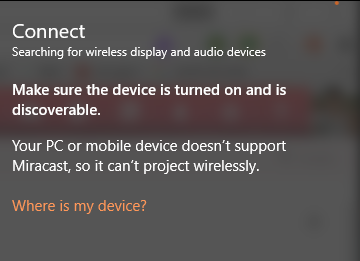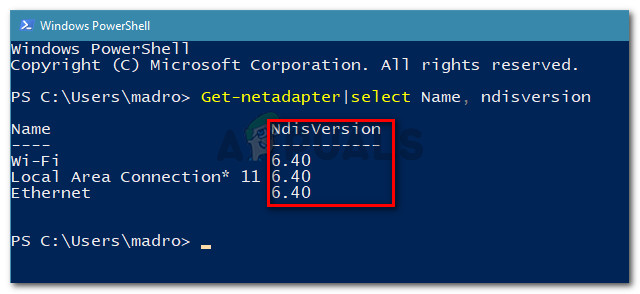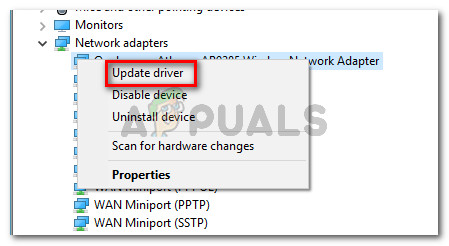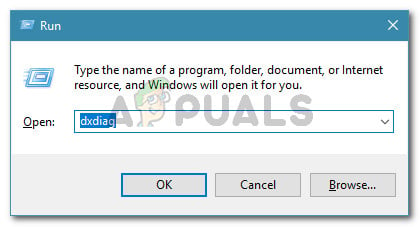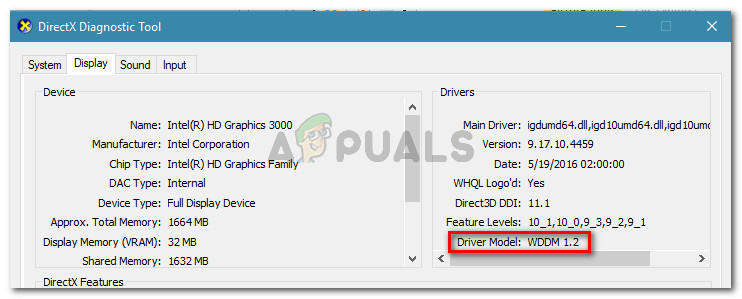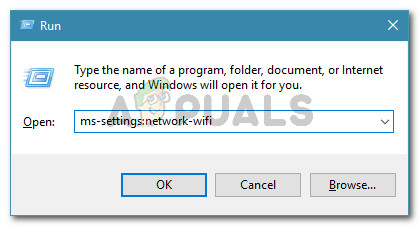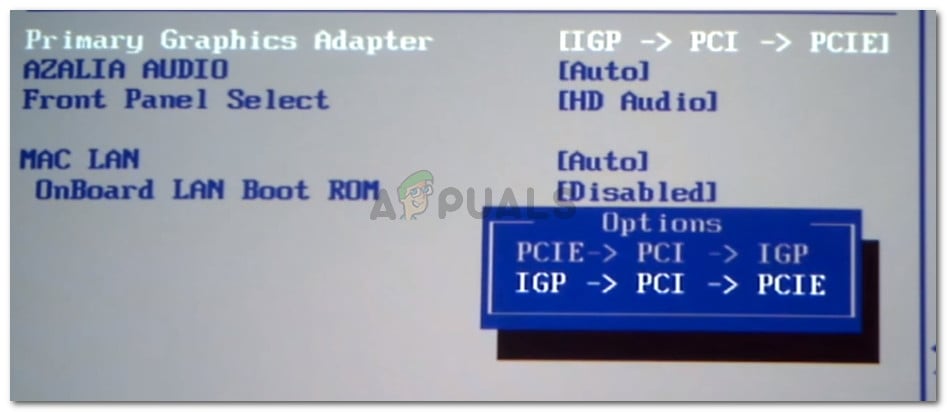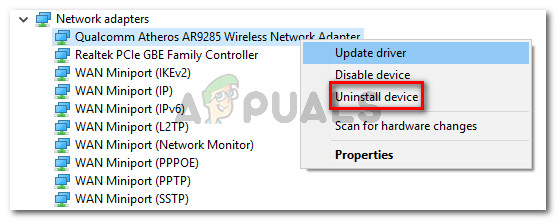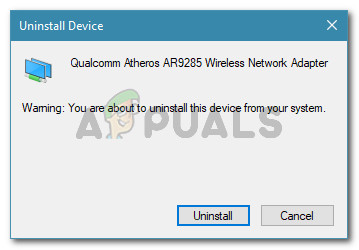What is Miracast?
Miracast is an industry-standard that allows devices to discover each other without the need for HDMI cables. You can use it to mirror the contents of your devices’ screens wirelessly. You can think of Micracast as a wireless HDMI cable. But keep in mind that Miracast functions exclusively like a screen mirroring protocol. This means that it doesn’t have a “smart” component. Let’s say that you wanted to stream a video from your phone to your PC through Micracast – you’ll have to leave your phone’s screen on the whole time.
What is causing the PC or mobile device doesn’t support Miracast error?
The problem with Miracast (aside from missing the “smart” component) is that it’s pretty unreliable and the requirements along with its configuration are pretty confusing for some users. We investigated the “Your PC or mobile device doesn’t support Miracast” error by looking at various user reports. From what we were able to gather, there are several scenarios that will lead to the apparition of this error message:
Intel Graphics Hardware is disabled – Since Windows 10 will only support Miracast through a compatible USB dongle or in conjunction with the Intel graphics chipset, you’ll need to make sure that your Intel Integrated Graphics is enabled and updated with the latest version.Wi-Fi is turned off – Several users have reported that this error message can also occur if you forget to enable the Wi-Fi component (when connecting through Intel Graphics Chipset.One of the devices is not Miracast capable – Keep in mind that not are devices are equipped to use Miracast. This error message might actually signal that the system is not Miracast ready. You can verify this theory by running a series of diagnostics.The wireless adapter is forced to 5Ghz – Several users have managed to resolve the issue by changing the wireless adapter settings to Auto from 5GHz Only or 802.11blg.Cisco AnyConnect or similar software stopping the Miracast connection – Several users have reported that in their case, the Miracast connection was not occurring because a third party software with an integrated VPN feature was flagging the Micracast technology as a “Split Tunnel” security risk.
If you’re struggling to resolve this particular issue, this article will provide you with a list of verified troubleshooting steps. Below you have a collection of methods that other users in a similar situation have used to get the issue resolved. To be as time-efficient as possible, start with Method 1 where we test if the current system is capable of supporting Miracast and then proceed to the next one if the tests have determined it is. Note: Before you start troubleshooting, keep in mind that you need a physical way for the Miracast technology to transmit the signal wirelessly (either built-in Wi-Fi capabilities or a Wi-Fi USB dongle).
Method 1: Verify if your PC is MiraCast compatible
Before you explore any other troubleshooting avenues, it’s important to ensure that your device is equipped to support a MiraCast connection. Now, there are two main components that power a Miracast connection – network and graphics. In the steps below, we are going to conduct a couple of tests that will reveal if your system is capable of supporting a Miracast connection. We are going to start by seeing if you’re network adapter is compatible and then verify if your graphics drivers are equipped to support Miracast. Here’s a quick guide with what you have to do: Once you’ve ensured that your computer is ready to support a Miracast connection, you can move to the next methods below where we explore different repair strategies.
Method 2: Make sure that Wi-Fi is enabled on both devices
Even though this seems like an obvious thing to do, a lot of users have managed to resolve the issue after discovering that the Wi-Fi component on one (or both) devices involved in the Miracast connectivity attempt was turned off. Since it uses Wi-Fi Direct, you don’t necessarily need to have both of your devices connected to the same network, but you do need to ensure that Wi-Fi is enabled on all devices. To make sure that Wi-Fi is enabled on a Windows 10 PC, press Windows key + R to open up a Run dialog box. Then, type or paste “ms-settings:network-wifi” and press Enter to open the Wi-Fi tab of the Network & internet Settings menu. Once you’re inside the Wi-Fi tab, make sure that the toggle associated with Wi-Fi is turned On. If this method wasn’t applicable to your current situation, move down to the next method below.
Method 3: Enable Intel Integrated Graphics and update it to the latest version
Since you need a supported Intel integrated graphics card in order to create a Miracast connection, the issue might occur because the integrated graphics solution is disabled from your BIOS settings. Typically, this behavior is enforced by default if you buy a system that comes with a dedicated GPU. The steps of enabling the Intel dedicated graphics card will be different based on your motherboard manufacturer, but there is some common ground. To access your BIOS settings, you’ll need to press the BIOS key during the beginning of the startup procedures. On most machines, the BIOS key is one of the F keys (F2, F4, F8, F10) or the Del key (on Dell computers). You can also do an online search with “bios key + your motherboard manufacturer“. Once you gain entry into your BIOS settings, look for an Advanced (Expert settings, or something similar) menu and look for an entry named or similar to Advanced Chipset Settings. Next, select SouthBridge Configuration and change the Primary Graphics Adapter to IGP > PCI > PCI-E. On an ASUS BIOS, you can enable the integrated Intel card by going to Advanced > System Agent > Configuration/Graphics Configuration and enable the IGPU Multi-Monitor setting. Note: As you can see, every motherboard has different paths and entries that will allow you to enable the Integrated Graphics card. You will need to figure out your motherboard model or search online for the exact steps. If you enabled the Intel integrated graphics from BIOS and the error is still occurring, move down to the next method below.
Method 4: Changing wireless adapter to Auto
Some users have discovered that in their case, the “Your PC or mobile device doesn’t support Miracast” error was occurring because their wireless adapter was forced to 5Ghz or 802.11blg instead of being set to Auto. Apparently, this might create an issue with Miracast triggering the error when the user tries to pair two devices together. You can rectify the issue easily by setting the Wireless Mode selection back to Auto. Here’s a quick guide on how to do this: Once you hit the Ok button, restart your computer and see if you are able to use the Miracast feature at the next startup. If this method wasn’t applicable or didn’t enable you to resolve the error message, move down to the next method below.
Method 5: Disable the VPN solution (if applicable)
Based on several user reports, it seems like several third-party VPN solutions (including Cisco AnyConnect) are rejecting WiFi Direct (the underlying technology behind Miracast). Typically, these third-party will enable WiFi Direct as “Split Tunnel” security vulnerability, forcing the system to disable the functionality. The only way to test whether this scenario is occurring in your particular situation is to disable Cisco AnyConnect or similar software, restart your machine and see if you are able to create a Miracast connection. If this method isn’t applicable to your particular scenario, move down to the next method below.
Method 6: Uninstalling the Wireless Network Adapter driver
Some users have managed to get the issue resolved by reinstalling their Wireless Network Adapter driver. Several affected users reported that after they uninstalled the driver and restarted their machine, Miracast was no longer showing the Your PC or mobile device doesn’t support Miracast error. Here’s a quick guide on how to reinstall the Wireless Network Adapter driver:
Apple Doesn’t Advertise 5G Support for iPhones in India and Europe: Lack Of…SOLVED: If playback doesn’t begin shortly try restarting your deviceFix: Windows doesn’t have a network profile for this device errorFix: System Doesn’t Have Any USB Boot Option
